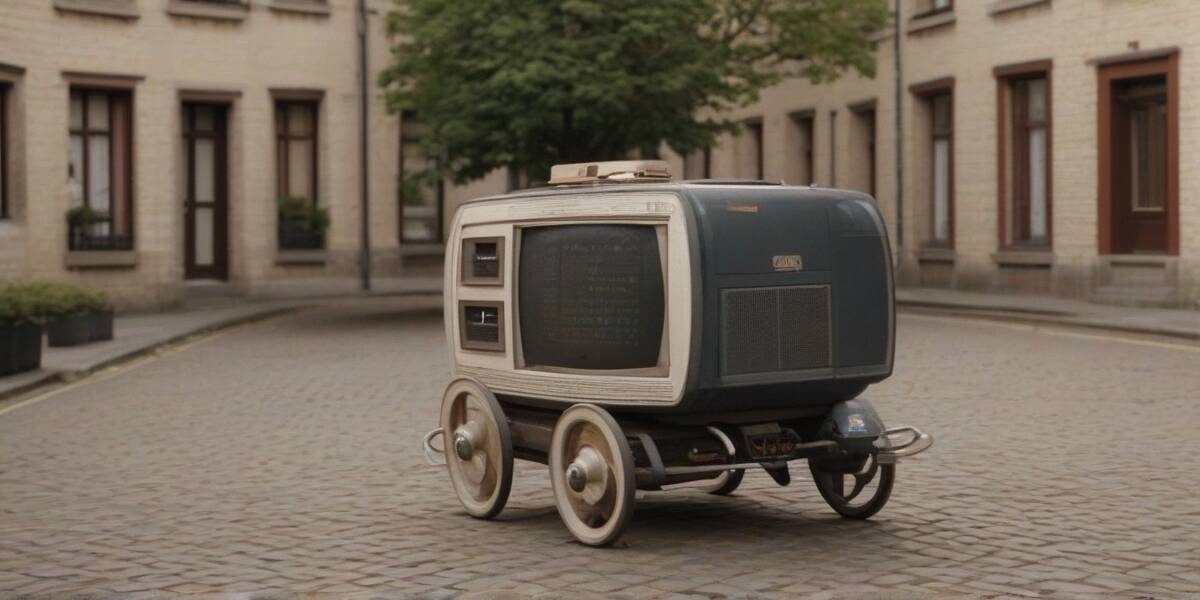Enterprising Techie Took The Bumpy Road To Replacing Vintage Hardware

Who, Me? Heavens to Betsy, dear reader, are you back again? It feels like only a week since we last met in the corner of The Register we call Who, Me? to share the schadenfreude of a fellow Regizen's misfortune.
Let’s get on with it again, shall we? This week meet a fellow reader we'll Regomize as "Loudon" who, back in the early 1990s, landed a job as a field engineer for a major aerospace corporation.
Now, you might expect that an aerospace corporation would want to be at the pointy end of technological innovation – and you'd be right. But that extended only to what the biz made, not the tools it used. The computer equipment Loudon had to work with was all very old – some of it from the 1970s – and he was getting pretty tired of it.
In particular he had grown weary of maintaining a bunch of DEC RM03s – huge free-standing cabinets with five disk platters inside, weighing 195kg (430 pounds) but contributing storage capacity of only 67MB. Loudon campaigned to have them replaced.
He finally had some success, as one department agreed to replace their old failing VAX with a spanking new MicroVAX 3100 Model 10. The MicroVAX 3100 Model 10, you no doubt recall, had a SCSI port for external storage – so the old RM03 attached to the VAX could also go, and be replaced with modern (for the time) storage.
It would be faster, it would be more capacious, it would be easier to maintain – everyone was happy.
Loudon's plan was to take the old RM03 cabinets and strip them down for parts to keep the rest of the fleet running until he could persuade other departments that SCSI was the future they needed, now. He didn't imagine that would take long once the one MicroVAX started operating.
Unfortunately, other departments had different ideas about what should become of the surplus disks. One department, which had three RM03s already, expressed a desire to add another five to its system. They saw the prospect of a mind-blowing 536MB of storage at their disposal, while Loudon saw a room full of antiques he would have to spend his days tweaking just to keep them alive.
So when it came time to decommission the old disk cabinets, "we decided to move the RM03s to our site office by pushing them over the (very bumpy) road and path to our office," Loudon recalls. Furthermore, "we were not gentle, and each RM03 had a rough journey."
- Sysadmin's favorite collection of infallible utilities failed … foully
- IT sent the intern to sort out the nasty VP who was too important to bother with backups
- Why have just one firewall when you can fire all the walls?
- Bright spark techie knew the drill and used it to install a power line, but couldn't outsmart an odd electrician
Indeed the journey was sufficiently rough that, when the department that wanted the disks asked how much it would cost to get them moved and set up, Loudon could honestly say it was not economical to repair them. "We had done some work on one drive and costed up the parts and labor to get it back into full working order," he wrote, and "the costs were far higher than doing what their colleagues had done."
So it was that another MicroVAX found itself a new home.
Loudon admits that similar tactics were employed in the following years to get rid of a lot of the vintage gear – but some departments were just that determined to hang onto their old systems. Even after he left that employer, he would still get phone calls years later from "some fresh-faced field engineer who was presented with a 40-plus year old antique" who needed advice on how to troubleshoot.
This seems like a fairly extreme way to persuade an employer to shell out for an upgrade, but we suspect Loudon is not alone. If you've ever encouraged a failing system to a well-timed accident, let us know about it in an email to Who, Me? and we'll share your story while protecting your secret. ®
From Chip War To Cloud War: The Next Frontier In Global Tech Competition
The global chip war, characterized by intense competition among nations and corporations for supremacy in semiconductor ... Read more
The High Stakes Of Tech Regulation: Security Risks And Market Dynamics
The influence of tech giants in the global economy continues to grow, raising crucial questions about how to balance sec... Read more
The Tyranny Of Instagram Interiors: Why It's Time To Break Free From Algorithm-Driven Aesthetics
Instagram has become a dominant force in shaping interior design trends, offering a seemingly endless stream of inspirat... Read more
The Data Crunch In AI: Strategies For Sustainability
Exploring solutions to the imminent exhaustion of internet data for AI training.As the artificial intelligence (AI) indu... Read more
Google Abandons Four-Year Effort To Remove Cookies From Chrome Browser
After four years of dedicated effort, Google has decided to abandon its plan to remove third-party cookies from its Chro... Read more
LinkedIn Embraces AI And Gamification To Drive User Engagement And Revenue
In an effort to tackle slowing revenue growth and enhance user engagement, LinkedIn is turning to artificial intelligenc... Read more

